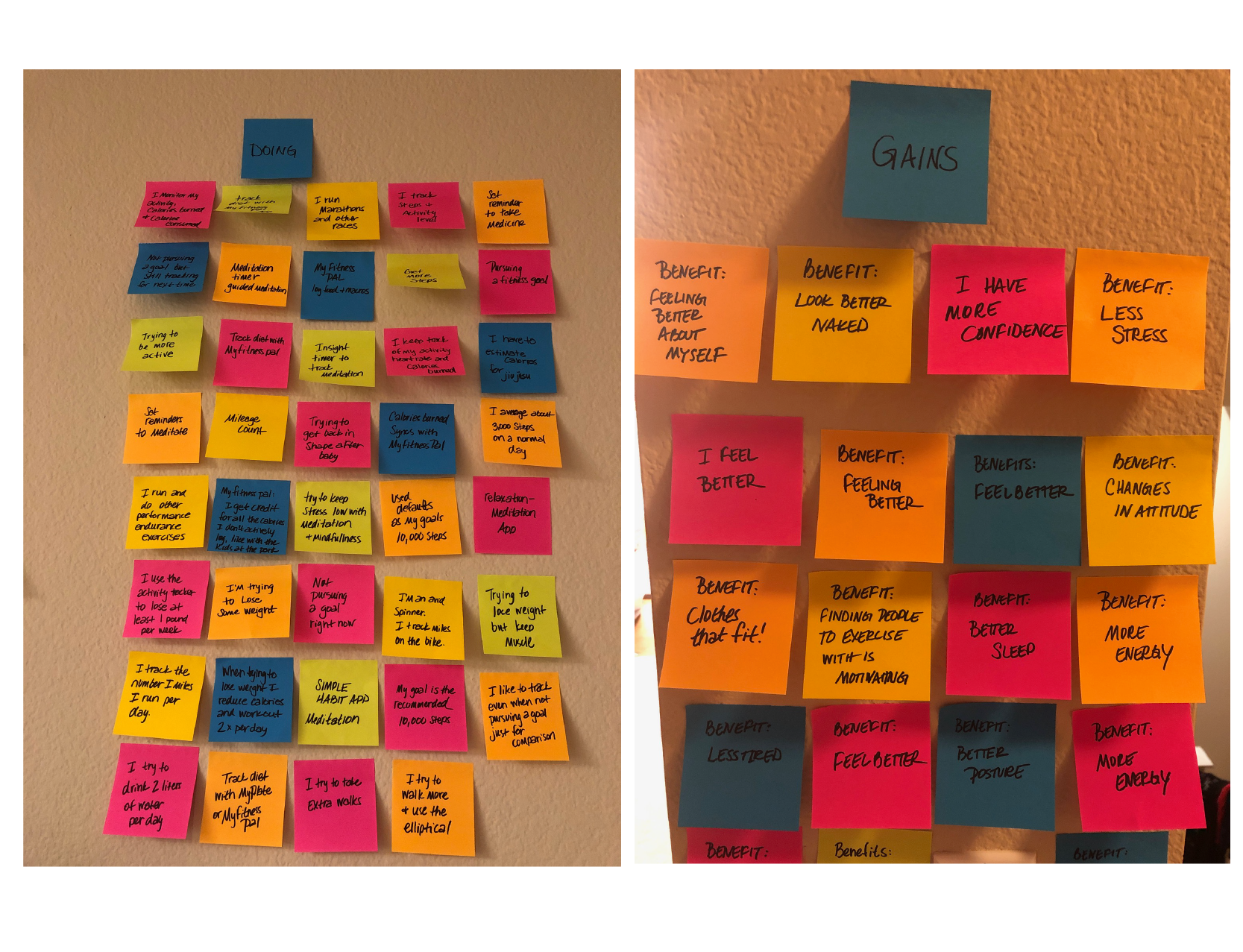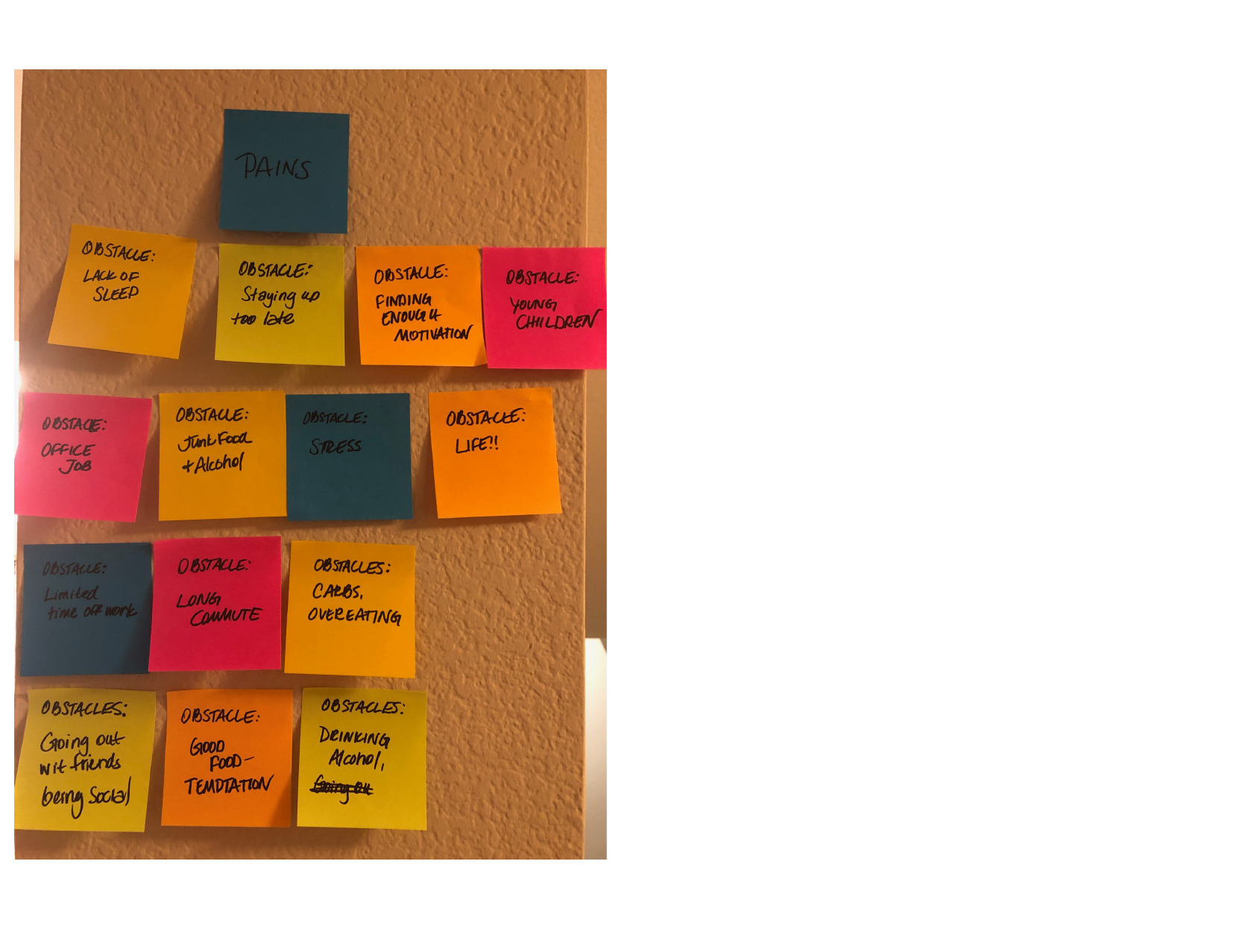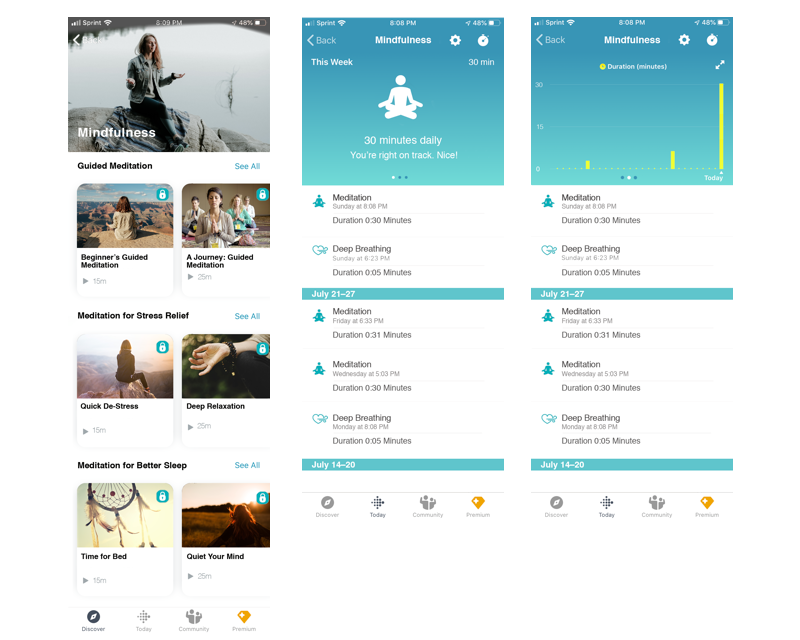Beyond Steps: Adding a Fitness-Related Feature that Motivates Users to Strive for Whole Health
Background
Fitbit, the leader in wearable activity trackers, wants to take motivating people to maintain a healthy lifestyle even further. In recent years they have made strides in creating wearables that rival the (more expensive) Apple watch. Now that they’ve proven they can compete with other smartwatch makers, they want to retain and engage their loyal fitness-focused users by adding a new fitness related feature(s). Specifically, they are interested in features that focus on “whole health” - Something that motivates users to strive to become healthy, well-rounded human beings, in every aspect of their life.
The Objective
To create a new motivational fitness-related feature that embeds smoothly with the existing Fitbit app. The feature should maintain the established Fitbit branding and direction and use existing guidelines.
The Approach
Because Fitbit already does a good job motivating users, it will be challenging to find an element that hasn’t already been covered. The practical things seem to be well taken care of: exercise, activity, sleep, water, food, etc. Maybe there are more idealistic goals users could be motivated to achieve. I will use the design thinking method to discover user needs that will help me determine what Fitbit’s new “whole health” fitness related feature should be.
NOTE: This project was completed in July/August 2019 as a capstone project for UX academy, and by pure coincidence Fitbit implemented one of my proposed elements - The Mindfulness Guided Meditation feature in the discovery menu - in November 2019
Empathize - Research
Methods
After determining my research goals, I began to conduct my secondary research. I started with the competitive analysis show below. As a Fitbit user myself, I had limited knowledge of what other wearable fitness trackers on the market had to offer. This helped me get an overview of industry standard features, and to see the strengths and weaknesses of Fitbit’s competitors. Next, I conducted a literature review to discover all I could online about Fitbit and fitness trackers in general. I concluded by research by conducting user interviews with users who currently use a fitness tracker or have done so in the past.
A Competitive Analysis gives me a good overview of the market and the existing features in apps that might compete with Fitbit.
Summary of findings
Fitness tracking device wearers track a lot of information for a lot of different reasons. There are many different reasons they have for tracking their movement, diet and sleep, but there is one over-riding goal they are all trying to achieve: to feel better. And for users trying to achieve this ambitious goal, information = motivation and motivation is everything! Nearly every user mentioned wanting to feel better as their ultimate goal. Because that goal can be ambiguous, and getting there often takes time and discipline, users need something to keep them engaged. Fitbit almost gamifies something that could otherwise be a monotonous task - tracking diet and exercise.
DEFINE THE PROBLEM
Analyzing the research findings
I used several tools to help analyze my research findings. I started by creating an empathy map. To do this, I translated they answers given from my user interviews into categories of saying, thinking/feeling, doing and pains and gains. When grouped together certain themes start to emerge that are help determine user needs.



I used the results from the empathy map to create provisional personas. I tried to personify users and help illustrate their needs. I used the provisional personas to guide my design decisions.
As I mentioned before Fitbit has taken care of the practical elements of diet and exercise (diet, exercise, sleep, etc). To enhance user experience I am proposing Fitbit consider adding a mindfulness feature that allows users to track habits that benefit mind+body. I am proposing three elements to the mindfulness feature: 1.) guided meditations (similar to guided workouts) 2. A way to track mindful habits. 3) The possibility for self assessment.
NOTE: This project was completed in July/August 2019 as a capstone project for UX academy, and by pure coincidence Fitbit implemented one of my proposed elements - The Mindfulness Guided Meditation feature in the discovery menu - in November 2019
IDEATE
How might we?
To come up with solutions to the mindful Fitbit feature design, I created how might we questions. How Might We questions help generate possible answers to the design problem, or at the very least jump start the creative process to find a solution.
How might we encourage users to engage in habits that benefit their body and mind?
How might we provide users with a way to track their mindful habits?
How might we illustrate the link between healthy habits and feeling better?
Existing and proposed app structure
I wanted the new feature to fit seamlessly into the existing Fitibit app. I wanted it to be quickly learnable and draw on users’ existing mental model for other fitbit features. The illustration below shows how I implemented the feature within the existing structure.
The existing app structure of Fitbit. Proposed additions for the Mindfulness feature are in orange.
After I determined where my key feature screens would fit it, I needed to decide what they would look like. Again, I wanted seamless integration with the existing app, so I tried to base all my designs on that. Below you can see some of the key screens with the UI decisions I made.


Prototype
After I created my key screens for the feature I created this high fidelity prototype with Marvel. I created the prototype to use in the next phase of the project, user testing. Click anywhere to interact with it. The tasks I planned for with this prototype are finding a guided meditation through the discovery screen and tracking or logging a meditation session.
TEST
To test my feature I asked 5 users to take a test drive through the Marvel prototype above. 100% of the users were able to find a guided meditation and log or track a meditation session. There were no critical errors. Of the testers, there were 3 current Fitbit users who thought the additional screens and UI were integrated seamlessly into the current app, which is what I was hoping for
NEXT STEPS
After user testing, I have a handful of high priority revisions to make in the next iteration. After that, user testing should be conducted again before packaging the project for hand off.
NOTE: This project was completed in July/August 2019 as a capstone project for UX academy, and by pure coincidence Fitbit implemented one of my proposed elements - The Mindfulness Guided Meditation feature in the discovery menu - in November 2019


